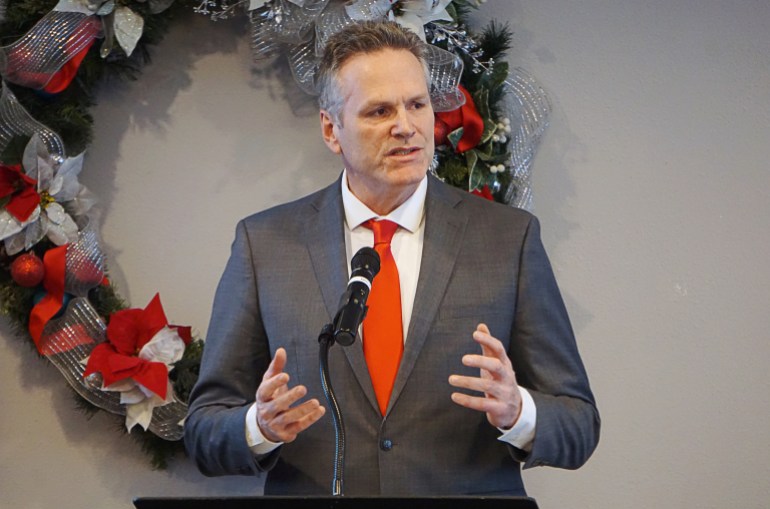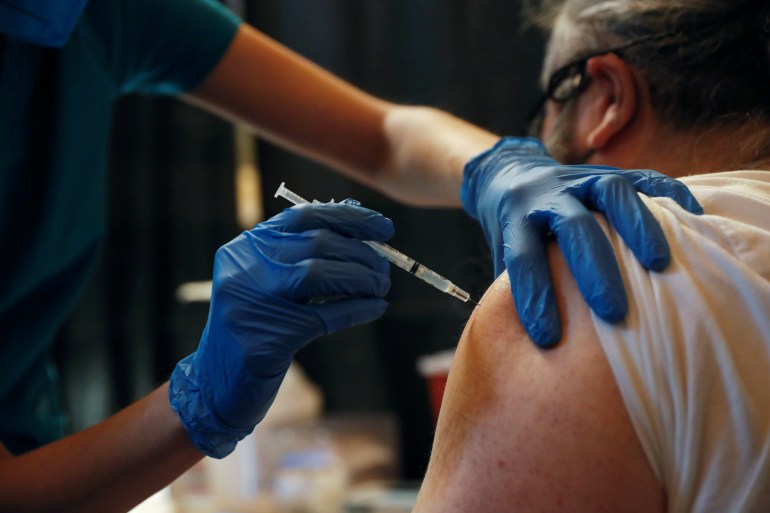Alaska makes COVID-19 vaccines available to anyone above 16
Many US states are vaccinating only front-line workers, the elderly and those with underlying health conditions.

Alaska has become the first US state to make COVID-19 vaccines available to anyone age 16 or older, eliminating eligibility requirements for people who work or live there.
Governor Mike Dunleavy announced the new rules on Tuesday for the state of about 730,000 people. “This marks a significant step forward in our efforts to put the virus behind us,” he tweeted.
Keep reading
list of 3 itemsTsunami warning cancelled after quake strikes off New Zealand
Aggressive seaweed threatens Hawaii’s remote reefs, could spread
More than one-quarter of Alaskans have received at least one jab, second only to New Mexico, according to data from the US Centers for Disease Control and Prevention (CDC).
Certain regions of Alaska are nearing a 90 percent vaccination among elderly people, officials said.

Many states are struggling to meet the vast demand for vaccines. Differing eligibility requirements have created a patchwork system, with certain states still restricting vaccines to adults 65 or older, along with people in high-risk groups.
The COVID-19 vaccines developed by Moderna and Johnson & Johnson are approved only for people age 18 and older, but younger Alaskans can receive the Pfizer-BioNTech vaccine.
Alaska officials hope that making vaccinations widely available will boost the crucial tourism industry before the summer season.
“Alaska’s also somewhat of a seasonal state with regard to aspects of the economy,” Dunleavy said at a news conference. “We’re hoping that we can get the cruise ships back there, the tourism industry back here.”
As of Wednesday, more than 127 million doses of COVID-19 vaccines had been distributed in the US and 95.7 million shots had been administered, according to the CDC.
As the pace of inoculations picks up, several states have moved to relax COVID-19 restrictions.
North Carolina Governor Roy Cooper on Wednesday announced an agreement was reached with legislative, health and education leaders to reopen many schools in the state for full in-person learning.

Under the plan, all elementary schools would return to in-person learning full-time, while districts could choose whether middle schools and high schools are to reopen their classrooms or offer hybrid learning, officials said. The new legislation is expected to move through the legislature this week.
In California, the Los Angeles Unified School District and its teachers’ union on Tuesday reached a tentative deal for students to return to school in April. The agreement is contingent on teacher vaccinations, extensive health measures and the county’s impending exit from the state’s most restrictive tier of health regulations.
States reopening
Earlier this week, New York City’s public school system – the nation’s largest – said it would welcome high school students back to the classroom on March 22 as part of its gradual reopening.
The city also reopened movie theatres last week, nearly a year since they were shuttered.
Texas and Mississippi have taken bolder steps to reopen, lifting statewide mask mandates and most restrictions on businesses.
Maryland Governor Larry Hogan took similar action on Tuesday when he lifted several public health measures, including limits on outdoor and indoor dining.
Governors Andrew Cuomo and Phil Murphy announced on Wednesday that restaurants in New York City and New Jersey would be able to expand indoor dining capacity to 50 percent beginning March 19. Restaurants in the rest of New York state will expand to 75 percent capacity.
Top health officials last week urged Americans to continue to wear masks and practise social distancing, despite states announcing the easing of restrictions.
“Today we are at a critical nexus in the pandemic,” CDC Director Rochelle Walensky said on March 3. “So much can turn in the next few weeks.”